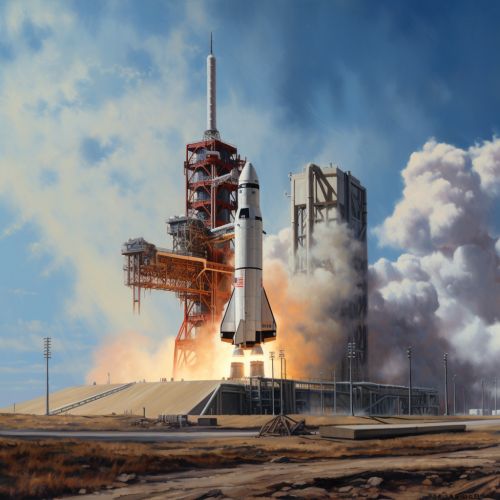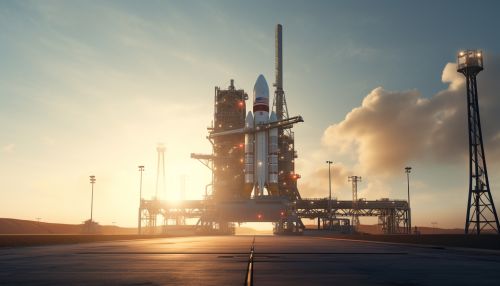Apollo program
Overview
The Apollo program was a significant endeavor by the United States' National Aeronautics and Space Administration (NASA) aimed at landing humans on the moon and safely returning them to Earth. Initiated in 1961 and culminating in 1972, the program was named after Apollo, the Greek god of light, music, and the sun, symbolizing the enlightenment and progress that the project sought to achieve.
Background
The Apollo program was born out of the geopolitical context of the Cold War, during which the United States and the Soviet Union engaged in a space race as part of their broader competition for global influence. The program was a direct response to the Soviet Union's early successes in space exploration, most notably the launch of the first artificial satellite, Sputnik, in 1957, and the first manned spaceflight by Yuri Gagarin in 1961.


Objectives
The primary objective of the Apollo program was to land an American astronaut on the moon and return him safely to Earth before the end of the 1960s, a goal set by President John F. Kennedy in a 1961 address to Congress. Secondary objectives included developing the technology necessary for a manned lunar landing, conducting scientific research on the lunar surface, and establishing American preeminence in space.
Apollo Missions
The Apollo program consisted of a series of manned and unmanned space missions. The first four missions, Apollo 1 through Apollo 4, were unmanned test flights. The tragic fire during a launch rehearsal test for Apollo 1 resulted in the deaths of three astronauts, leading to a comprehensive review of the Apollo spacecraft's design and construction. The subsequent missions, Apollo 5 through Apollo 10, were manned missions that tested various components and procedures in Earth and lunar orbit, paving the way for the lunar landing.
The pinnacle of the Apollo program was the Apollo 11 mission, which successfully landed astronauts Neil Armstrong and Buzz Aldrin on the moon on July 20, 1969. This was followed by five more successful manned lunar landings with Apollo missions 12, 14, 15, 16, and 17. The Apollo 13 mission was intended to be the third manned lunar landing, but a critical failure en route to the moon forced the crew to abort their mission and return to Earth.
Technology and Innovation
The Apollo program spurred numerous technological innovations and advancements. The development of the Saturn V rocket, the most powerful rocket ever built, was a key factor in the success of the Apollo missions. The Apollo spacecraft consisted of two main parts: the Command Module, where the astronauts lived and controlled the spacecraft, and the Lunar Module, which landed on the moon and returned the astronauts to the Command Module in lunar orbit.
The Apollo program also led to advancements in computers and software. The Apollo Guidance Computer (AGC) was one of the first integrated circuit-based computers and played a crucial role in guiding the Apollo spacecraft to the moon. The software for the AGC, developed by MIT's Instrumentation Laboratory, was one of the first instances of software engineering.
Legacy
The Apollo program had a profound impact on science, technology, and society. It not only achieved its primary goal of landing humans on the moon but also contributed significantly to our understanding of the moon through the collection of lunar samples and the conduction of various experiments. The program also spurred advancements in various fields, including materials science, computer science, and telecommunications.
Moreover, the Apollo program had a significant cultural impact. The iconic images and footage of the Apollo missions, particularly of the Earth seen from space and of humans walking on the lunar surface, have become enduring symbols of human achievement and exploration.
